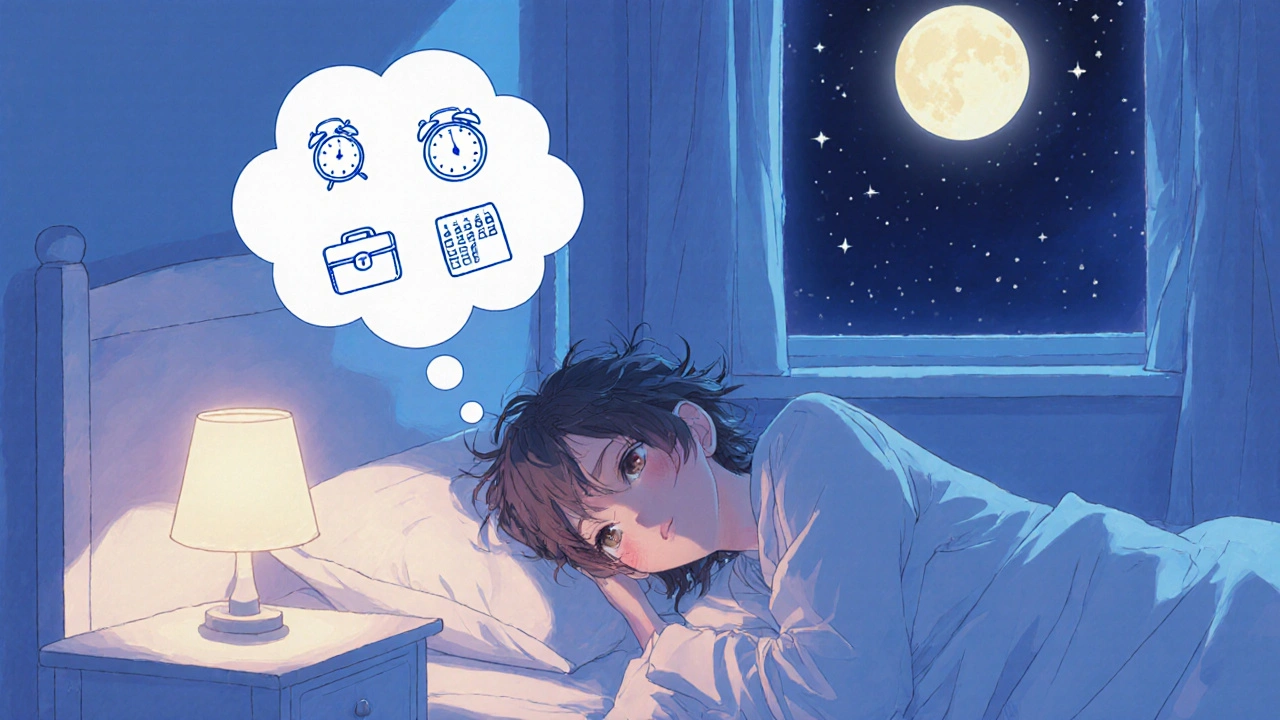CBT-I Benefits: How Cognitive Behavioral Therapy for Insomnia Improves Sleep
When you can’t sleep, it’s not just about being tired—it’s about your brain getting stuck in a loop of worry, bad habits, and confusion about bedtime. That’s where Cognitive Behavioral Therapy for Insomnia, a structured, non-drug approach to fixing sleep problems by changing thoughts and behaviors around sleep. Also known as CBT-I, it’s the most effective long-term treatment for chronic insomnia, according to sleep specialists and major medical guidelines. Unlike sleeping pills that only mask the problem, CBT-I goes to the root: how you think about sleep, how you act before bed, and how your body learns to associate the bedroom with rest—not stress.
CBT-I doesn’t just help you fall asleep faster. It rewires your sleep system. It teaches you to stop lying in bed awake for hours, which trains your brain that the bed is for sleep only. It helps you challenge thoughts like "I’ll never get enough sleep" or "If I don’t sleep now, tomorrow will be ruined," which keep your mind racing. It includes simple tools like sleep restriction—limiting time in bed to match actual sleep—and stimulus control, which means getting up if you’re not asleep after 20 minutes. These aren’t tricks—they’re science-backed methods that rebuild your natural sleep rhythm. And it works. Studies show over 70% of people who complete CBT-I see lasting improvements, even years later. You don’t need a therapist to start—many apps and programs deliver the same core techniques, making it accessible and affordable.
What makes CBT-I different from other sleep aids is that it doesn’t depend on chemicals. It doesn’t cause next-day grogginess, dependence, or memory issues. It gives you control. You learn to recognize what’s keeping you awake—not because of stress alone, but because of habits you didn’t even know were hurting you. Maybe you’ve been checking the clock every 10 minutes. Maybe you’ve been napping to "make up" for lost sleep. Maybe you’ve been scrolling in bed, thinking it’s relaxing. CBT-I calls these out and replaces them with what actually works. And it doesn’t just help with sleep—it helps with anxiety, mood, and energy during the day. Better sleep means better focus, less irritability, and fewer headaches.
Below, you’ll find real-world guides that connect CBT-I to everyday health situations. You’ll see how it fits alongside medications like those for glaucoma or high blood pressure, how it complements treatments for anxiety and chronic pain, and how people use it when other options fail. These aren’t theory pieces—they’re practical stories from people who’ve been there, and what actually helped them sleep again.

